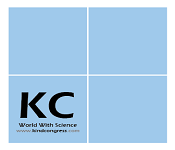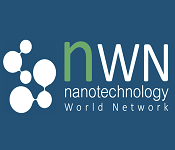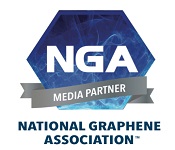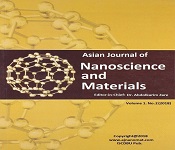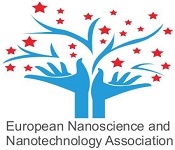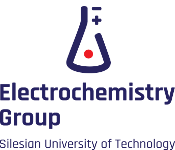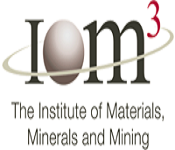Theme: Using Novel Materials Exploring Different Crystallography Techniques
Crystallography Congress 2018
After overwhelmed success of the previous conferences, we are excited to announce that “4th International Conference on Crystallography & Novel Materials” will be held in November 19-20, 2018 at Bucharest, Romania. The theme of our conference is “Using Novel Materials exploring different Crystallography Techniques”. Crystallography Congress 2018 initiates a world technical crystallography congress to learn about the latest development and different techniques, as well as how to launch new applications of novel materials and technologies in crystallography.
This conference provides a perfect symposium for scientists, engineers, directors of companies and students in the field of Materials Engineering, Crystallography, Nano Materials and related fields to meet and share their knowledge. We will be happy to bring together experts from different countries and exchange their views, reinforce knowledge base, and learn new concepts. With the participation of outstanding international experts prompt keynote presentations, Oral talks, Poster presentations and Exhibitions. We sincerely invite you to join us and your presence will certainly add value to the conference and very much appreciated!
ME Conferences conducts Novel conferences, Symposia and Workshops, concerning current international interest. ME Conferences want to serve the global information community in the development and distribution of high quality, scholarly conferences. It aim to support Global research communities, by empowering clusters of scientists to regularly meet and discuss topics with frontrunners in the field. These conferences cover diverse top ranked specialties and budding aspects of important and relatively broad subject areas. Organize conferences for knowledge sharing and providing global platform to explore and learn new researches in their respective fields.
Why to attend??
This conference Crystallography Congress 2018 will focus on different types of Crystallography topics like Protein crystallography, Crystallography in Biology, Chemical Crystallography, Crystallography in Materials Science, Electron crystallography, Crystallography congress invites you for plenary talks, symposium , workshops, invited sessions and oral and poster sessions from various universities and associations. This will be the best opportunity to outreach the large gathering of participants from all around the world and get name recognition at this two-day event. World-eminent speakers, most recent researches, latest techniques and the advanced technologies in crystallography using novel materials are the principal features of this conference.
Target Audience:
Our Organization would be privileged to welcome the:
- Eminent Scientists from Materials Science
- Chemistry Research Professors
- Junior or Senior research fellows from Universities
- Chemical Engineering Students
- Directors of companies
- Chemical Engineers and Ph.D. scholars
- Members of different Materials science departments
- Mining and metallurgy associations
- Material science associations and many more….
Track 1: Applied Crystallography
Crystallographic methods are now dependent on classification of the diffraction patterns of a material that is targeted by a beam of different kind of rays. X-rays are mostly used beams that include electrons or neutrons. This is given by the wave properties of the material particles. Cryptographers mostly state the kind of beam used, is the terms X-ray crystallography, neutron diffraction and electron diffraction. There has been quite some time that this confirmation of the crystal or any material from outside normality is detected with the consistency of the inside structure.
Track 2: Crystallography of Novel Materials
Novel materials have major roles in different fields of engineering; they are given by different structure of molecules and materials, to our knowledge to the physical and the virtual world. It should be obvious that all matters are made of crystal materials. From the past it can be seen that there are only about hundred different types of molecules in the entire world. There are same hundred different molecules that shape a great and many different substances including the air we inhale to metal the used to bolster many tall structures. Metals that carry unique property of pottery, and earthenware production are uniquely in contrast to polymers. The properties of materials depend upon the iotas that are utilized and how they are made together. The structure of different novel materials can be differentiated by the general extent of different elements. The nuclear structure of any novel material basically influences the substance's physical, warm, electrical, attractive, and optical properties. Also the micro-structure and macro-structure can influence these properties but they mostly affect the mechanical properties and the rate of concoction response. The properties of the novel material offer intimations with the structure of the different novel material.
Track 3: Chemical Crystallography
Chemical crystallography is an application of diffraction techniques to the study of structural chemistry. A frequent purpose is the identification of natural products, or of the products of synthetic chemistry experiments; however detailed molecular geometry, inter molecular interactions and absolute configurations can also be studied. Different chemical Structures are studied as a function of temperature, pressure, application of electromagnetic radiation, magnetic or electric field: these kind studies comprises of only small minority of the total structures. The single crystal is used in x-ray diffraction to find the structure of a chemical compound that has been historically classified as 'Chemical Crystallography'. Most of these difficulties can be mostly overcome by employing more powerful radiation sources as the extent of diffraction depends on the number of electrons an atom has, and finding the positions of hydrogen atoms using X-ray diffraction can be difficult.
Track 4: Crystal Growth and Crystallization
The crystal or any material growth is a most important part of a crystallization process, and it consists of new atoms, ions, or polymer strings into the characteristic arrangement of a crystalline called the Bravais lattice. The crystal growth always follows an initial stage of both homogeneous and heterogeneous (surface catalysed) nucleation, and unless a "seed" crystal, is added to start the growth, that is already exist. X-beams are used to examine the basic properties of solids, fluids or gels. Photons will interact with electrons, and give information about the vacillations of electronic densities of the different matter. The process of crystal growth produces a crystalline solid whose atoms or molecules are typically closely packed, with fixed and same positions in space relative to one another. The crystalline state of matter is differentiated by a distinct structural rigidity and high resistance to deformation (i.e. changes of shape and/or volume). Many crystalline solids have high values of Young's modulus and shear modulus of elasticity. These are same with most liquids or fluids, which have a low shear modulus, and also exhibit the macroscopic viscous flow.
Track 5: Crystallography in Biology
Biology in Crystallography is the structural biology that helps us to see the detail that are missing from the view and also consequently as a powerful tool to unpick the intricate and also exquisite choreography of life. For centuries, we have been able to visualize structures inside a cell, but even the most powerful microscopes are limited in the detail they provide, either by the sheer physical boundaries of magnification, or because the samples themselves are not alive and working. Structural biology methods delve beneath these limits bringing molecules to live in three Dimensions and into sharper focus. It has reached to the very limits of how a molecule works and how its function can be modified. Proteins are built with a DNA template and the string of amino acids then synthesized into very complex loops, sheets and coils – it might be seen like a tangle, but these structures indicate how the protein will interact with other structures around it in order to undertake its role in the cell. The elegant structures of crystals and the complexes that are formed can be breath-taking in their logic and symmetry, but they are also useful in helping us to understand how cells actually work. Most of the shapes, sizes and assemblies of molecules can be assigned to various compartments in cells and thus put into context with their surrounding environment.
Track 6: Nuclear Magnetic Resonance Crystallography
Nuclear Magnetic Resonance (NMR) crystallography is a type method that uses primary NMR spectroscopy to find the structure of different solid materials in the atomic scale. So the solid-state NMR spectroscopy will be used primarily, and possibly supplemented by quantum chemistry calculations (e.g. density functional theory), powder diffraction etc. If crystals is grown is properly and uniquely, any crystallographic method can generally be used to determine the crystal structure and in case of organic compounds the molecular structures and molecular packing. The main use of NMR crystallography is in determining micro crystalline materials which are used to this method but not to X-ray, neutron and electron diffraction. This is largely used because interactions that are short range are measured in NMR crystallography.
Track 7: Electron Crystallography
Electron Crystallography is a type of method that can supplement X ray-beam crystallography for the determination of small crystals, both inorganic, natural, and proteins, for example, the layer proteins, that have the substantial 3-dimensional precious stones are required for that procedure. Different protein structures are taken from either 2-dimensional sheets or helices, polyhedrons, or scattered individual proteins. Electrons can be used in the place of X ray-beams and on account of electrons interface more easily with molecules than that of X-Ray beams do. In this case, X-beams will go through a thin 2-dimensional precious stone that will be diffracting altogether, though electrons can be used to model a picture. On the other hand, the solid interaction between electrons and protons will make thick gems impenetrable to electrons. The major drawback in X ray-beam crystallography is when checking the stages in the diffraction design. As the X-beam focal point is predicted, it is hard to model a structure of the different gems that are being diffracted.
Track 8: Recent Development in X-ray Studies
There are many different developments made like X-ray free-electron lasers (XFELs) that give different possibilities for X-ray crystallographic, spectroscopic studies of different radiation and sensitive biological samples that close to physiological conditions. To use these new X-ray methods, tailored experimental methods, data-processing protocols have to be imitated. The highly radiated-sensitive photosystem II (PSII) protein complex is a main target used for XFEL experiments used to study the mechanism of light-induced in water oxidation taking place at a Mn cluster in the complex. Then there was development of a set of tools for the study of PSII at XFELs, using a new liquid jet based on electrocuting, energy dispersive von Hamos the X-ray emission spectrometer for the hard X-ray range and also high-throughput soft X-ray spectrometer up on a reflection zone plate. But our next focus is on PSII, that the methods we use here are applicable to a wide range of metalloenzymes.
Track 9: Novel Materials for Energy Applications
The first law of thermodynamics, energy can neither be created nor destroyed. However we still need to be conservative in usage because of the efficiency, we cannot make full use of the energy. Large amount of energy is wasted. So how can we minimize energy waste and how can we reuse the wasted energy becomes critical in energy saving. Nanotechnology is considered to be one of the most important future technologies involving several disciplines of science including solid state physics, solid state chemistry, solid state ionic, materials engineering, medical science and biotechnology. Manipulating matter at the manometer scale, using building blocks with dimensions in the Nano-size range, makes it possible to design and create new materials with unprecedented functionality and novel or improved properties. Nanostructured materials made of Nano sized grains or nanoparticles as building blocks, have a significant fraction of grain boundaries with a high degree of disorder of atoms along the grain boundaries (or particle surfaces), and a large ratio of interface (or surface) area to volume.
Track 10: Thermo Electric Crystallography
The escalating demand for alternative, clean energy sources requires the development of new and effective materials for energy recovery, conversion, storage, and transfer. Thermoelectric (TE) materials convert heat into electrical energy and vice versa and, as such, are promising materials for waste heat reduction or recovery. Further advances in thermoelectric materials could enable stand-alone solid state heat engines. Today, applications of TE materials range from portable refrigerating bags and outdoor cell phone chargers to modern units designed for power generation in space utilizing heat from nuclear sources to power solar system exploration missions. Thermodynamic data are the solubility curves, the presence of metastable phases, polymorphs, liquid-liquid separation. They depend on multiple parameters such as temperature, pH, solvent, impurities, etc. In addition, kinetic trajectories in the phase diagram are relevant to control most of the final properties of the synthesized crystals. The path followed in the diagram controls the nucleation and growth of the crystals, and thus their number, size, and morphology.
Track 11: Computational Crystallography
The method computational crystallography is the new method that has a high-resolution X-ray sources that are currently made, like the LCLS in Stanford and the EXFEL in Hamburg, new methods of data acquisition may become possible only for the structural characterization of Nano-meter sized material that are made up to atomic resolution. In our computational crystallography there are subgroup that are developed for the new crystallographic methods and approaches for developing the ultra-fast structural changes in both micro- and macro-molecular structures and assemblies of both non-periodic or quasiperiodic type. This field of crystallography has been evolved together with the developments in computer science and molecular biology, making three-dimensional structure determination of complex or crystal faster and easy for biological assemblies in this method.
Track 12: Future Challenges in Crystallography
Future challenges for crystallography in structure-based drug discovery are in the fields of data validation, data mining and data management. State-of-the-art validation methodologies in protein crystallography have been broadly documented. However, successful application of these validation principles requires continuous efforts. Easy-to-use and sophisticated tools for the critical assessment and realistic interpretation of macromolecular model coordinates are still in short supply. Advanced tools designed to tackle the mentioned pitfalls should be of particular interest. These include tools for the visualization and analysis of structure determination statistics, atomic displacement and translation liberation screw motions (TLS) parameters, and structural fluctuations, as well as validation protocols for verifying stereochemistry and agreement with the electron density of all heterogeneous regions of macromolecular models.
Track 13: Crystallography Techniques
There are different types of crystallography techniques used to find the crystal diffraction and Precession electron diffraction (PED) is one of the methods to gather the electron diffraction patterns in a type of microscope called transmission electron microscope (TEM). Using this method the patterns are seen by processing an incident electron beam across the central axis of the microscope, then there is PED pattern that is formed by integration along the diffraction patterns. These patterns will produce a quasi-kinematical diffraction pattern that is mostly used as input for the direct methods algorithms to understand the crystallography structure of molecule sample or crystal.
Track 14: Characterization and Development of Novel Materials
The development of the Novel materials has been more powerful development that has led to most important technological advancements in recent history of Crystallography. But the physical and computational means related to the enhancing computational capabilities at the device or material levels have also started making very challenging set of situation for keeping electronic devices cool, a most important factor in determining their speed, efficiency, and reliability. As there are many advances in Nano-electronics and also in the emergence of new application such as three-dimensional chip stack architectures and also in the flexible electronics, now than ever there are needs and opportunities for the novel materials to help in addressing some of these thermal management challenges and also in the future development of the novel materials.
Track 15: Neutron Scattering in X-Ray Crystallography
Neutron diffraction scattering in X-ray crystallography is the application used for neutron scattering to the find the atomic or magnetic structure of any crystal or material. The process of determination of a sample is done by placing the sample in a beam of thermal or cold neutrons to observe a diffraction pattern that gives details about the structure of the molecule or material. This neutron diffraction technique is same as X-ray diffraction but of their different scattering properties, neutrons and X-rays will give the same information about the beams X-Rays are mostly used for the high resolution analysis of strong x-rays from synchrotron radiation that are mostly used for the shallow depths or thin specimens but neutrons have high penetration depth.
Track 16: Crystallography Applications
Crystallography method is used to study different materials that form crystals like salts, metals, minerals, semiconductors, as well as various inorganic, organic and biological molecules. It is also used determine the electron density, the mean positions of the atoms in the crystal and their chemical bonds, disorder and various other information. Crystallography has been a used widely for the extraction of compounds in milk and any other types of information obtained through structure function relationship. Although more detailed information from X-ray analysis has been secured from substances which are commonly known to be crystalline, it has been surprising to find substances commonly thought of as being non-crystalline solid as actually having a partially crystalline structure and that this structure can be changed by heat treatment, pressure, stretching, etc. Casein is an example of the latter class of proteins. Stewart has shown that even solutions tend to assume an orderly arrangement of groups within the solution.
Track 17: Crystallography in Nanotechnology
Nanotechnology is a leading interdisciplinary science that is emerging as a distinctive field of research. Its advances and applications will result in technical capabilities that will allow the development of novel nanomaterial’s with applications that will revolutionize the industry in many areas. Nanoparticles are one of the cornerstones of nanotechnology. Indeed, even though the research in this field has been underway for a long time, many present and future applications are based on nanoparticles. The development of nanotechnology can be approached from several directions; microscopic physics, microelectronics, materials nanotechnology, and cluster science. The different possible structures include Nano rods, nanoparticles, fullerenes, nanotubes, and layered materials. The status and prospects of protein micro crystallography (MPX) at high brilliance synchrotron radiation sources are reviewed. We discuss emerging trends in miniaturizing sample environments for serial crystallography (SX) experiments allowing manipulation and positioning of biological objects down to Nano scale dimensions with low contact forces.
Track 18: Mineralogy and Geology- Role in Crystallography
Mineralogy is geological resources of major economic importance. Most of them are crystalline which explains the important role played by crystallography in their study. Minerals may occur either massive or forming characteristic geometric forms known as crystals. Max von Laue discovered the diffraction of X-rays by crystals and almost immediately diffraction methods were applied to the structural characterization of minerals. One early success of X-ray crystallography was the structural classification of silicate minerals. However, application of X-ray diffraction was not limited to minerals. It was soon used for the structural characterization of molecular crystals as well and, later on, even of proteins. Nowadays, crystallography structure is commonly employed in many branches of experimental sciences such as physics, chemistry, biochemistry, and geology among others. Mineralogy is basically the science of minerals, which includes their crystallography, chemical composition, physical properties, genesis, their identification and their classification. Mineralogy is one of the branches in science of Geology and there are also related subjects such as Nano materials, material science, and metallurgy and Nano science. “Principles of Elementary Mineralogy and Crystallography”. We have reviewed the historical perspective of the science of mineralogy, cited some of the evidences for the prehistoric uses of minerals and rocks, and described some of the principle applications of the science of mineralogy.
Track 19: Crystallography in Material Science
Material Science is the application of physics and various branches to describe the properties of materials. It is a combination of Physical sciences such as solid mechanics, solid state physics, and materials science. Crystallography is used by materials scientists to characterize different materials. In a form of crystals, the drawbacks of crystalline arrangement of atoms are easily visible to see macroscopically, as the natural shapes of the crystals will reflect the atomic structure. Materials Science in chemistry includes the synthesis of different crystals and study of materials that have very useful magnetic, optical, electronic and mechanical properties. Material science has a broad range of applications like includes semiconductors composites ceramics and polymer materials. Some materials that have been analysed crystallographic ally, such as proteins, do not occur naturally as crystals. Basically all these types of molecules are kept in solution and are made to slowly crystallize by the vapour diffusion method. Materials Science role in crystallography is a scientific discipline used to find the properties of different crystals and also expanding to crystals, composite materials, surround polymers, ceramics, and biomaterials. It also involves in the recent discovery, development and designing of new materials.
Track 20: Entrepreneurs Investment Meet
Related Conferences: Crystallography Congress | Nanotechnology Meetings | Applied Crystallography Events | Material Science Conferences | Nano Science Events | Crystallography Conferences
- 5th World Congress on Smart and Emerging Materials, April 19-20, 2018 Dubai, UAE
- International Conferences on Materials and Polymer Chemistry, July 05-06, 2018 Bangkok, Thailand
- 20th International Conferences on Advanced Materials Science & Nano Technology, August 27-29, 2018 Dubai, UAE
- 24th World Congress on Nano materials and Nanotechnology, July 12-13, 2018 Bangkok, Thailand
- 18th International Conferences and Exhibition on Materials Science and Engineering, May 28-30, 2018 Osaka, Japan
- 3rd Edition of International conferences on Applied Crystallography, June 04-05, 2018, London, UK
- 23rd World Congress on Structural Materials and Engineering, Nov 12-13, 2018 Melbourne, Australia
- 30th International Conferences on Materials Chemistry & Science, August 27-28, 2018 Toronto, Ontario, Canada
- 20th International Conferences on Emerging Materials and Nanotechnology, June 25-26, 2018 Vancouver, British Columbia, Canada
- 21st International Conferences on Advanced Materials & Nanotechnology, September 04-06, 2018, Zürich, Switzerland
- 3rd International Conferences on Applied Crystallography, September 17-18, 2018 Vancouver, British Columbia, Canada
- Asian Crystallographic Association Conferences, December 02-05, 2018, Auckland, New Zealand
- 101st Canadian Chemistry Conferences and Exhibition, May 27-31, 2018, EDMONTON, AB
- Events by British Crystallographic Associations, March 25-28, 2018, University of Warwick, UK
- 68th Annual Meetings by American Crystallographic Association, July 20-24, 2018, Toronto, Canada
- 31st European Crystallographic Meeting; August 22-27, 2018, Oviedo, Spain.
Related Societies:
British Crystallography Association; International Centre for Diffraction Data; Indian Crystallographic Association; Chemical Society of Montenegro; European Crystallographic Association;The Materials Research Society; Turkish National Crystallographic Association; International Union of Crystallography; Slovenian Chemical Society; French Crystallographic Association; The Materials Information Society; Asian Crystallographic Association; American Chemical Society; Society of Chemists and Technologists of Macedonia; International Organization for Biological Crystallization; Union of Chemists in Bulgaria; Association of Greek Chemists; Czez and Slovak Crystallographic Association; Chemical Society of Montenegro; Croatian Crystallographic Association; American Crystallographic Association; Cambridge Crystallographic Data Centre; Meetings of Crystallographic Associations; International X-Ray Analysis Society; Slovenian Crystallographic Society; The Electrochemical Society; Society of Crystallographers in Australia in Australia and New Zealand
Other Related Associations:
- American Association for Crystal Growth
- American Chemical Society
- American Crystallographic Association
- American Institute of Chemists
- American Oil Chemists Society
- American Society for Mass Spectrometry
- American Society of Brewing Chemists
- Asian Crystallographic Association
- Association of Greek Chemists
- Australian Association for Crystal Growth
- Belgian National Committee for Crystallography
- British Association for Crystal Growth
- British Crystallographic Association
- Cambridge Crystallographic Data Centre
- Chemical Society of Montenegro
- Clay Minerals Society
- Croatian Crystallographic Association
- Crystallographic Society of Japan
- Czech and Slovak Crystallographic Association
- Dutch Association for Crystallography
- Egyptian Society of Crystallography
- European Crystallographic Association
- European High Pressure Research Group
- European Macromolecular Crystallographers
- European Mineralogical Union
- European Neutron Scattering Association
- European Powder Diffraction Conference
- French Association of Crystallography
- French Crystallographic Association
- French Society of Neutronics
- German Society for Crystallography
- Indian Crystallographic Association
- International Centre for Diffraction Data
- International Council for Applied Mineralogy
- International Mineralogical Association
- International Organization for Biological Crystallization
- International Scientific Unions
- International Union of Crystallography
- International Union of Geological Sciences
- International X-Ray Analysis Society
- Iranian Chemists Association
- Italian Chemical Society
- Italian Crystallography Association
- Japan Association for International Chemical Information
- Mexican Society of Crystallography
- Mineralogical Society of America
- Mineralogical Society of Japan
- Morocco Association of Crystallography
- Pan Africa Chemistry Network
- Pancyprian Union of Chemists
- Pittsburgh Diffraction Society
- Polish Chemical Society
- Polish Society of Crystal Growth
- Polish Synchrotron Radiation Society
- Slovenian Chemical Society
- Slovenian Crystallographic Society
- Society of Chemists and Technologists of Macedonia
- Society of Crystallographers in Australia and New Zealand
- Swedish Neutron Scattering Society
- Swiss Neutron Scattering Society
- Swiss Society for Crystallography
- The Electrochemical Society
- The Institute of Nanotechnology
- The Japanese Society of Microscopy
- The Materials Information Society
- The Materials Research Society
- The Mineralogical Society
- Turkish National Crystallographic Association
- Union of Chemists in Bulgaria
- US National Committee for Crystallography
ME Conferences is glad to welcome you all for the upcoming “4th International Conference on Crystallography & Novel Materials” will be held in November 19-20, 2018 at Bucharest, Romania. The theme of our conference is “Using Novel Materials exploring different Crystallography Techniques”. Crystallography Congress 2018 initiates a world technical crystallography congress to learn about the latest development and different techniques, as well as how to launch new applications of novel materials and technologies in crystallography.
Conference Highlights:
- Applied Crystallography
- Crystallography of Novel Materials
- Chemical crystallography
- Crystal Growth and Crystallization
- Crystallography in Biology
- Nuclear Magnetic Resonance (NMR) crystallography
- Electron Crystallography
- Recent development in the X-ray studies
- Novel materials for Energy applications
- Thermo electrics Crystallography
- Computational Crystallography
- Future challenges in Crystallography
- Crystallography techniques
- Characterization and development of novel materials
- Neutron scattering in X-Ray crystallography
- Crystallography Application
- Crystallography in Nanotechnology
- Mineralogy and Geology- Role in Crystallography
- Crystallography in Material Science
Important and scope:
The Crystallization Market in crystallography is differentiated by various technologies, product, and end user. In the market, crystallization is further divided into protein purification, crystallization in biology, applied crystallization, and crystallography in novel materials. The Crystallization techniques that are used for the largest share of both type of crystallography and novel materials market in 2015. However, the crystallography and material science market will be seen in the highest growth in the next few years.
There are many factors that are propelling the growth of the Applied Crystallization & Crystallography Market will include the increase and also the immediate need for the high-resolution information on protein structures, technical advancements, and increasing R&D in the material science and biotechnological areas. And on the other side, the factors that influence restraining the growth of the market will include materials that are qualified, lack of generalized crystallization methods associated with the types of proteins and different crystallography techniques.
Why Romania???
The conference Crystallography Congress 2018 in Romania, gives us idea about fourteen countries from South-Eastern Europe - in many respects, a cradle of European civilization, and a portal where Europe meets the rapidly emerging economies of the Middle and Far East. The old socio-political theories from the last century and the political turmoil that followed their desertion have greatly affected scientific research in South-Eastern Europe. Driven by social, economic or professional factors, many chemists and physicists moved to leading research laboratories in Europe
The Romania Development Institute was noted in the Ministry of Science and Technology that has prepared a long term plan of science and technology for the next century that took into account the only some of the available resources. The the same way Romania also was selected for its comparative advantage areas, including information storage and electronic data processing of different novel materials, fine chemicals, and machinery in the short term; technologies and new materials in the mid-term; and some areas such as the environment, health, and material science as another group.
Why to attend???
The Crystallization Market in crystallography is differentiated by various technologies, product, and end user. In the market, crystallization is further divided into protein purification, crystallization in biology, applied crystallization, and crystallography in novel materials. The Crystallization techniques that are used for the largest share of both type of crystallography and novel materials market in 2015. However, the crystallography and material science market will be seen in the highest growth in the next few years.
In the year, 2000 Romania announced an different and most interesting plan to promote science and technology so as to perform high-technology activities that would dominate the economy by the year. The Ministry of Science and Technology initiated to coordinate different technology-related projects between government, associations and industry in a variety of different fields including semiconductors, computers, chemistry, and novel materials and many more.
Use of Crystallography in Different Fields:
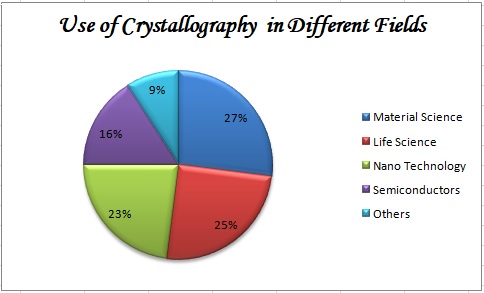
The field of Material Science and nanotechnology across the globe has the major portion as it plays an important role in our day to day life as it is major topic which gives us idea about the developments in different technologies and techniques used for crystallography and different novel materials. Material Science field includes smart materials, emerging materials, nanotechnology, materials research, biomaterials and advanced materials. Chemical crystallography is an application of diffraction techniques to the study of structural chemistry and novel materials. There are many fields of study but the material research and structure are used for the characterization of different novel materials.
Statistics of Different fields in the world of Crystallography:
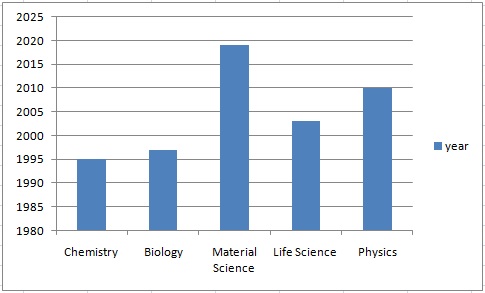
The economic growth and statistics of Romania, which is as part of the European Union market, is a major developing and income that is mixed economy with the highest Human Development Index and also skilled labour force, that is 16th largest in the European Union in terms of total nominal GDP.
According to the current economic growth it is expected to reach 1 trillion of USD PPP before 2035. The place Romania will continues to be one of the most leading nations in Central and Eastern Europe for allowing all foreign direct investment the inward FDI in the whole country with a cumulative FDI totalling more than $170 billion since 1989.In the last 20 years Romania has also grown as a major center for mobile technology, material science and technology, development of novel materials, and related hardware research.
Major Associations and Societies around the Globe:
- British Crystallography Association (BCA)
- Indian Crystallographic Association (ICA)
- European Crystallographic Association (ECA)
- French Crystallographic Association (FCA)
- Asian Crystallographic Association (ACA)
- Turkish National Crystallographic Association
- Croatian Crystallographic Association
- Czez and Slovak Crystallographic Association
- Union of Chemists in Bulgaria
- Chemical Society of Montenegro (HDCG)
- Association of Greek Chemists (EEX)
- Romanian Chemical Society (SChR)
- Slovenian Chemical Society (SKD)
- Serbian Chemical Society (SHD)
- Society of Chemists and Technologists of Macedonia (SHTM)
Major Associations in Material Science:
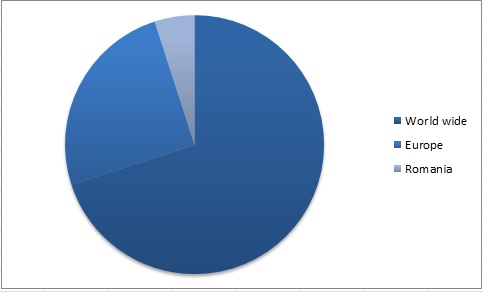
Top Universities in Romania:
- University Babes-Bolyai
- Alexandru Ioan Cuza University of Iasi
- University of Bucharest
- West University of Timisoara
- Transilvania University of Brasov
- Maritime University of Constanta
- University of Oradea
- Romanian-American University
- Eftimie Murgu University of Resita
- Apollonia University
- Nicolae Titulescu University
Major universities in Material Science:

Global Market at a Glimpse:
The research categorizes the crystallography and novel materials market on the basis of technologies of different techniques and products (analysers and reagents), and end users (pharmaceutical companies, biotechnology companies, government institutes, and academic institutions). On the basis of technology, the protein crystallization segment accounted for the largest share-47%-of the market in 2015.The availability of government and private funds, technological advancements, and growing research in the are related to structure-based drug design or material science are the factors that are mostly using the market in these regions. Although the economic turnover and deduction for the healthcare budgets are hampering the growth of the market. Also the increasing investments by the leading companies in these global markets, and increase in research and development activities of various technologies in material science.
Conference Highlights
- Applied Crystallography
- Crystallography of Novel Materials
- Chemical crystallography
- Crystal Growth and Crystallization
- Crystallography in Biology
- Nuclear Magnetic Resonance crystallography
- Electron Crystallography
- Recent development in the X-ray studies
- Novel materials for Energy applications
- Thermo electrics Crystallography
- Computational Crystallography
- Future challenges in Crystallography
- Crystallography techniques
- Characterization and development of novel materials
- Neutron scattering in X-Ray crystallography
- Crystallography Applications
- Crystallography in Nanotechnology
- Mineralogy and Geology- Role in Crystallography
- Crystallography in Material Science
- Entrepreneurs Investment Meet
To share your views and research, please click here to register for the Conference.
To Collaborate Scientific Professionals around the World
| Conference Date | November 19-20, 2018 | ||
| Sponsors & Exhibitors |
|
||
| Speaker Opportunity Closed | Day 1 | Day 2 | |
| Poster Opportunity Closed | Click Here to View | ||
Useful Links
Special Issues
All accepted abstracts will be published in respective Our International Journals.
Abstracts will be provided with Digital Object Identifier by

